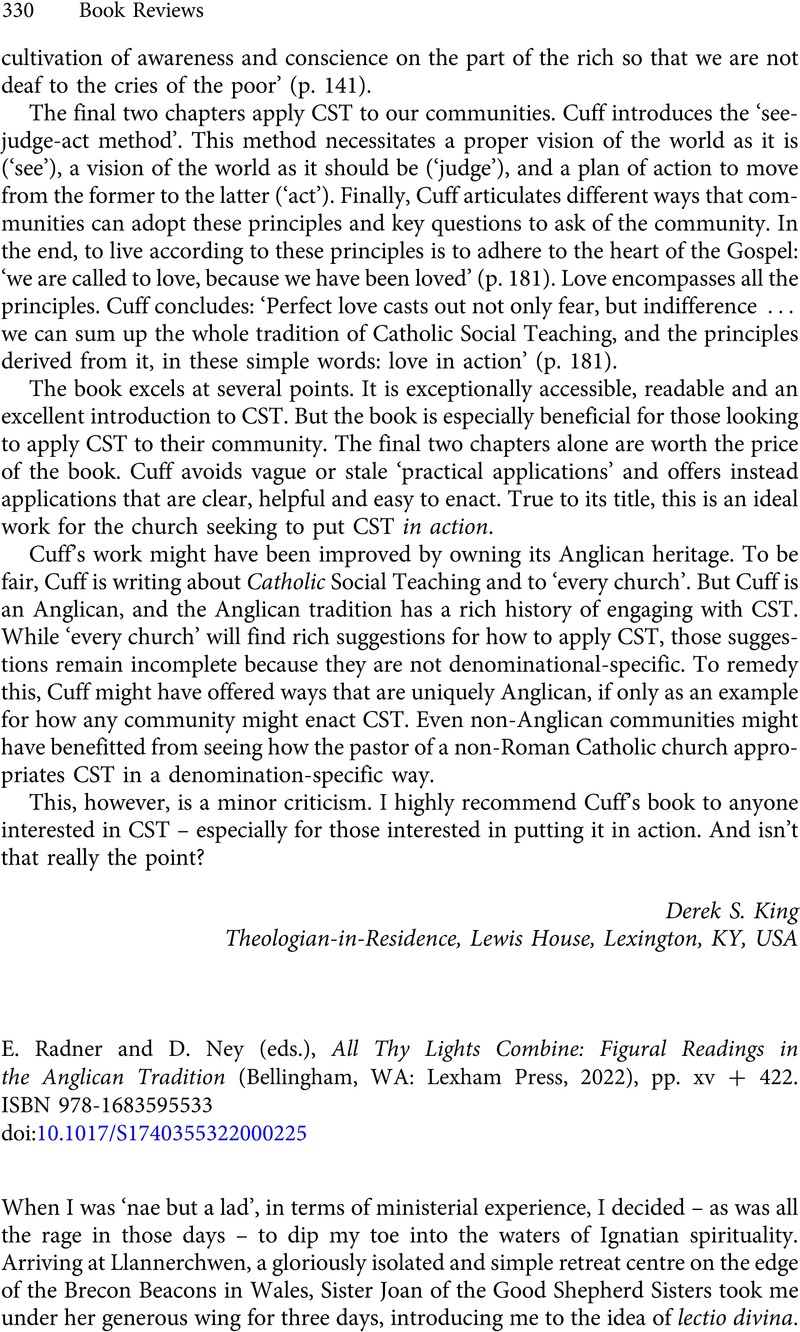No CrossRef data available.
Article contents
E. Radner and D. Ney(eds.), All Thy Lights Combine: Figural Readings in the Anglican Tradition (Bellingham, WA: Lexham Press, 2022), pp. xv + 422. ISBN 978-1683595533
Review products
E. Radner and D. Ney(eds.), All Thy Lights Combine: Figural Readings in the Anglican Tradition (Bellingham, WA: Lexham Press, 2022), pp. xv + 422. ISBN 978-1683595533
Published online by Cambridge University Press: 06 July 2022
Abstract
An abstract is not available for this content so a preview has been provided. Please use the Get access link above for information on how to access this content.

- Type
- Book Review
- Information
- Copyright
- © The Author(s), 2022. Published by Cambridge University Press on behalf of The Journal of Anglican Studies Trust



